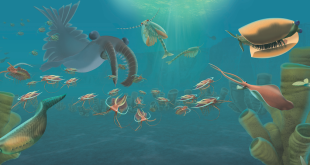Eukaryotes (“true nucleus”) have cells with membrane-bound nuclei containing chromosomes composed of chromatin. Constituents of eukaryotic chromatin include proteins called histones and RNA, in addition to DNA. Some nonhistone proteins are found associated with both prokaryotic DNA and eukaryotic chromosomes. Eukaryotes are generally larger than prokaryotes and contain much more …
Read More »Evolution
The Oparin-Haldane Hypothesis: Proof of Prebiotic Synthesis
The Oparin-Haldane hypothesis stimulated experimental work to test the hypothesis that organic compounds characteristic of life could be formed from the simpler molecules present in the prebiotic environment. In 1953, Stanley Miller and Harold Urey in Chicago successfully simulated the conditions thought to prevail on the primitive earth. Miller built …
Read More »Water: An Essential Component to Make Life Happen
The origin and maintenance of life on earth depend critically upon water. Water is the most abundant of all compounds in cells, forming 60% to 90% of most living organisms. Water has several extraordinary properties that explain its essential role in living systems and their origin. These properties result largely …
Read More »Pre-Cambrian Life: Prokaryotes and BGA
The earliest bacterium-like organisms proliferated, giving rise to a great variety of forms, some of which were capable of photosynthesis. From these arose the oxygen-producing cyanobacteria approximately 3 billion years ago. Bacteria are called prokaryotes, meaning literally “before the nucleus.” They contain a single, large molecule of DNA not located …
Read More »Darwin’s Theory: A Priliminary Idea
Darwin’s theory of evolution is now over 140 years old. Darwin articulated the complete theory when he published his famous book On the Origin of Species by Means of Natural Selection in England in 1859. Biologists today are frequently asked, “What is Darwinism?” and “Do biologists still accept Darwin’s theory …
Read More » EazyBio: Educate, Elevate, Empower EazyBio: Educate, Elevate, Empower
EazyBio: Educate, Elevate, Empower EazyBio: Educate, Elevate, Empower




